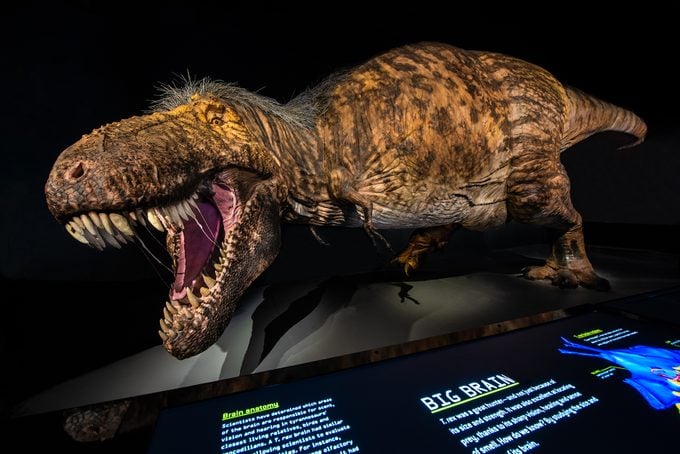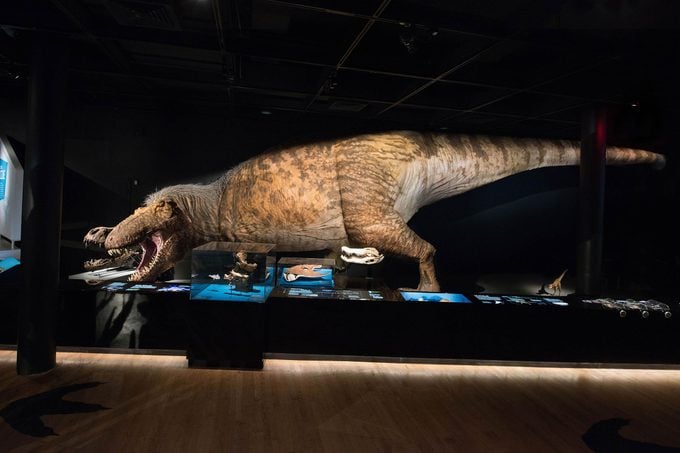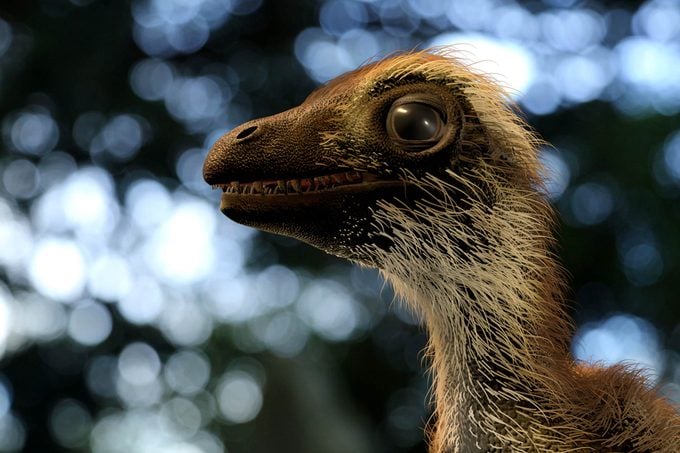This Is What the Tyrannosaurus Rex Really Looked Like
Updated: Apr. 04, 2021
The T.rex. The ultimate predator. But is what you're imagining right now really what the prehistoric beast looked like? Science says, probably not.

It’s been a while since dinosaurs walked the Earth…or at least, that’s a myth about dinosaurs many people believe. But with the power of science and a little bit of imagination, we’ve been able to imagine what dinosaurs may have really looked like. People have clear images in their mind of the Tyrannosaurus rex being a scaly, sharp-toothed, short-armed beast. But a new exhibit from the American Museum of Natural History is showing the predator in a new light.
What did the T. rex look like?

Associating the T.rex with sharp teeth and claws isn’t wrong. In fact, American Museum of Natural History paleontologists now know the T.rex had deep-rooted, stout teeth to destroy its prey. But this dinosaur wasn’t scaley. The American Museum of Natural History’s new exhibit shows the T.rex with a tuft of feathers. Many dinosaurs were closely related to birds and scientists have even found the fossilized remains of a feathered Dilong paradoxus, a member of the tyrannosaur family.
“I think the feathers on the adult would still be considered contentious,” Mark Norell, curator of the T. rex exhibit and chair of the museum’s paleontology department told Gizmodo. “No one has found a fossil feather on a T. rex, but we’ve found more relatives of T. rex with feathers, so we can infer it.”
Scientists hypothesize that the skin of the T.rex wasn’t scaled, but more like the skin of a turtle. They also had footprints similar to their bird relatives.
What did a baby T.rex look like?

Before it grew up into the biggest Tyrannosaurus, the baby T.rex was actually adorable. Norell says baby dinosaur bones are fragile, making them rare, but in the past 20 years, more young dinosaurs’ fossils have been found. Those, combined with looking at animals related to the T.rex, have helped paint a picture of a fluffy hatchling.
Scientists believe the T.rex also guarded their nests and babies just like their bird counterparts. The baby T.rex would have eaten insects and small reptiles and had long tails. They also had long arms, leading scientists to believe the arms of the adults grew more slowly than the rest of the body, leading to the short arms we commonly associate with the T.rex. If you want to bust more T.rex myths, find out what the T.rex really sounded like.